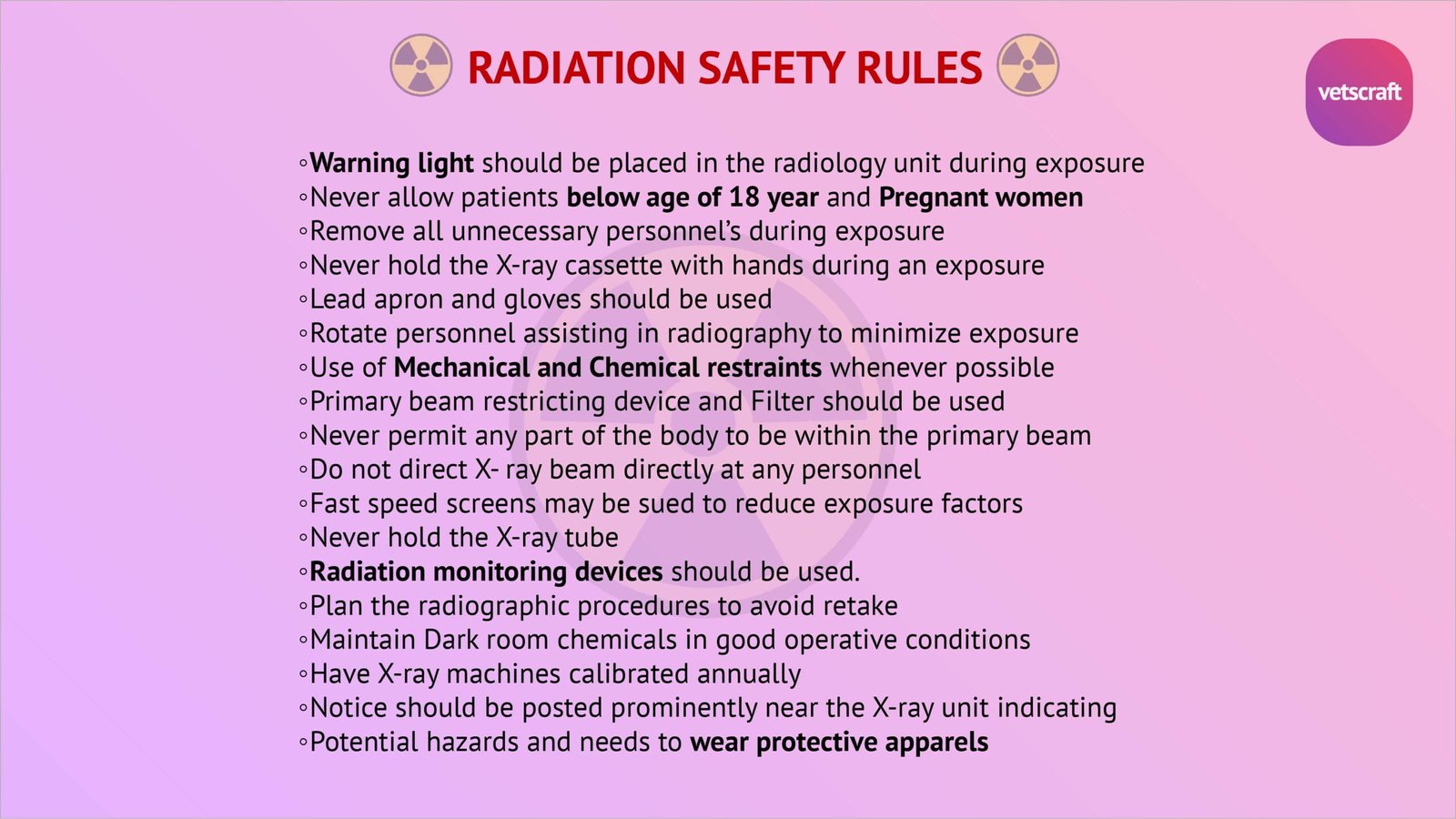TABLE OF CONTENTS
Personal monitoring devices and prevention of radiation by adoption of safety measures
Personal monitoring devices are Film badge, Pocket Ionisation Chamber and Thermoluminescent Dosimeter (TLD) and prevention of radiation by adoption of safety measures are by increasing the distance, Use of protective barriers or X- ray protective apparels, X-ray room and equipment, Reduction of exposure factors and unnecessary radiograph etc.
Personal monitoring devices
Personal monitoring devices for x-ray radiation monitoring are-
- Film badge
- Pocket Ionisation Chamber
- Thermoluminescent Dosimeter (TLD)
Film badge
Film badge is a method of dosimetry consisting of a plastic holder with a radiation sensitive film in a light proof package. At 3 months of periodic intervals, these can be sent and radiation exposed is monitored.
Pocket Ionisation Chamber
Pocket Ionisation Chamber is a method of dosimetry consisting of a charged ion chamber and electrometer, which can be read immediately to determine the amount of exposure.
Thermoluminescent Dosimeter (TLD)
Thermoluminescent Dosimeter (TLD) is a method of Dosimetry consisting of a chamber containing special compound that become electrically altered by ionising radiation.
Prevention of radiation by adoption of safety measures
Prevention of radiation by adoption of safety measures are various, these listed below and explained further-
- By increasing the distance between radiation source and personnel
- Use of protective barriers or X- ray protective apparels
- Location of x-ray room and equipments
- Reduction of exposure factors and avoiding unnecessary radiograph
By increasing the distance between radiation source and personnel
By increasing the distance between radiation source and personnel. Doubling the distance from the source will reduce the radiation exposure by a factor of four.
- Remove all unnecessary personnel from the radiographic suit during exposure
- Never permit patients under age of 18 or pregnant women in the radiographic
- Rotate the personnel who assist radiographic procedures to minimize exposure.
- Use mechanical restraints whenever possible, for example Sand bag can be used to position the animal on the table
- Use of chemical restraints, for example tranquilliser, sedatives etc.
- Operator should be in a shielding booth or behind a shielding screen or atleast 6 feet away from the X-ray source
Use of protective barriers or X- ray protective apparels
X- ray protective apparels or protective barriers are used to seek protection against scattered radiation and not against the primary beam.
Lead Apron should have minimum thickness of 0.25mm to 1.0mm of lead equivalent for voltages up to 100 kV. Rubber material impregnated in a plastic metallic lead. Usually 0.5 mm lead equivalent is present in the apron. The apron should never be folded but kept flat, since lead shielding material tends to separate after repeated bending.
Gloves and Goggles lead equivalent should be not less than 0.33mm , voltage upto 100 volts. Goggles should be used during fluoroscopic examination.
Location of x-ray room and equipments
The X-ray room should be located away from traffic place and in those places where public is likely to inadvertently exposed. The wall thickness should be 22cm thick concrete wall or lead lining sandwiched between plywood in the wall.
Reduction of exposure factors and avoiding unnecessary radiograph
Correct exposure factor, correct positioning should be adopted. Avoid repetition of the process. Unnecessary exposure should be avoided to reduce the x-ray exposure.
Radiation Safety Rules
Radiation Safety Rules are-

- Warning light should be placed in the radiology unit during exposure
- Never allow patients below age of 18 year and Pregnant women
- Remove all unnecessary personnel’s during exposure
- Never hold the X-ray cassette with hands during an exposure
- Lead apron and gloves should be used
- Rotate personnel assisting in radiography to minimize exposure
- Use of Mechanical and Chemical restraints whenever possible
- Primary beam restricting device and Filter should be used
- Never permit any part of the body to be within the primary beam
- Do not direct X- ray beam directly at any personnel
- Fast speed screens may be sued to reduce exposure factors
- Never hold the X-ray tube
- Radiation monitoring devices should be used.
- Plan the radiographic procedures to avoid retake
- Maintain Dark room chemicals in good operative conditions
- Have X-ray machines calibrated annually
- Notice should be posted prominently near the X-ray unit indicating
- potential hazards and needs to wear protective apparels